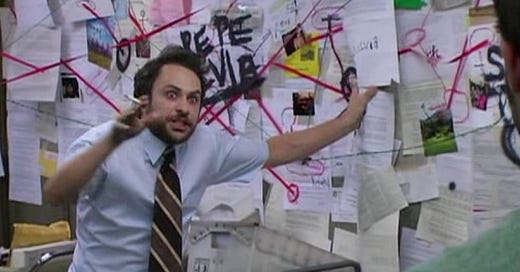A True Masterclass in Explanation
Three big lessons every teacher can take away from how John Danaher explains BJJ system to Joe Rogan
A lot of teachers and experts struggle to explain stuffs. That’s not an overstatement. That’s a bitter reality.
So, let’s take help from two master communicators.
This is a segment of video from Joe Rogan Podcast with John Danaher. But first, a little bit about of background on these two gentlemen.
Joe Rogan is a podcaster (one of the most popular in the world), a comedian, UFC Commentator, and in this context a black belt in Brazilian jiu-jitsu (BJJ).
John Danaher is a BJJ and mixed martial arts instructor and coach. He is widely regarded as one of the best instructors and coaches in these sports.
This particular conversation between these two experienced martial artists is a prime example of how two experts talk with each other. More interestingly, how a true coach does not right away give answers but wants the other to wrestle, figuratively, for the response.
A huge lesson for teachers, teacher developers and any domain experts who want to master the art of explanation.
Watch this, even if you are not into BJJ or martial arts in general.
(John Danaher defines Jiu Jitsu as a four step system)
Three observations:
First:
The technique Danaher uses is similar to Socratic Questioning, a method that focuses on discovering answers by asking a series of probing questions. He explains a bit and then throws a question. Waits for Rogan’s response and then adds more explanation. Then throws another question. Constantly keeping Rogan engaged and on the edge.
Interestingly, he uses the example of another sports (Javelin Throw) to illustrate the BJJ concept of taking the opponent to the ground first. Great use of analogy.
Second:
Danaher doesn’t give answers right away. The reason is because he knows Rogan is not a novice. He knows Rogan, as a BJJ martial artist and UFC commentator, has created his own abstract generalization out of many years of concrete experience.
And thus, he wants to check whether Rogan can eloquently explain BJJ concepts before he explains further.
It’s evident Danaher loves to explain in riddles.
He doesn't give one single straight answer, he makes Rogan think hard and work for every single word coming out of his mouth. Look at Rogan’s facial expressions. He is thinking hard and speaking a lot slower because he does not want to look like a fool in front of Danaher.
If Rogan was a complete beginner or novice, this style of explanation would fail flat. To a novice, Danaher would not have even talked about BJJ’s four step system.
Third:
Through out his explanation, he pauses and makes sure that Rogan is keeping up with him. For instance, around 6.30, he makes sure to repeat the three steps before moving on to the final one.
A subtle but important step in explanation: checking for understanding and reinforcement.
He does it again at around 7.05, while summarizing the four step system and creating a bigger picture.
(Side note: I love how Danaher keeps pushing and challenging Rogan in an almost nonchalant way.)
So the take aways:
Know where your learners are at.
The way you (a teacher, an expert) explain concepts to a novice learner is completely different than the way you would explain to intermediate or near-expert learners.
A lot of experts tend to be the victim of their own expertise, a syndrome known as the Curse of Knowledge. (I will make a separate post about it.)Questions are great but there’s a nuance.
Two things. First, the answer you get depends on the quality of the question you ask. Second, you ask questions based on where the learner is at.
Asking questions for interaction or engagement is cool but also be prepared to hear the sounds of cricket if you don’t know your learners.
Many teachers make this mistake. In a terrible way.Repetition is the mother of retention.
Especially, when you are explaining complex concepts with a series of complicated steps.
Spoken words are ephemeral - they easily vanish away. It’s a problem for teachers and learners.
So, repetition helps massively to connect every piece nicely and strengthen the understanding.
When in doubt: repeat to remember, remember to repeat (Brain Rules, John Medina)
Those are my take aways. Know the level of your students. Ask them questions appropriate to their level. Reinforce the explanation through meaningful repetition.
What else could you find in this video that you can connect with the art of explanation?
Let me know.




